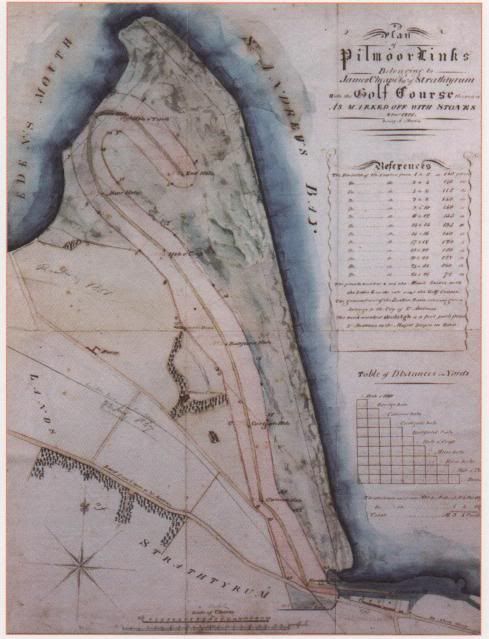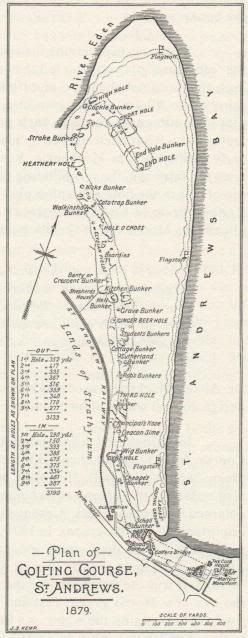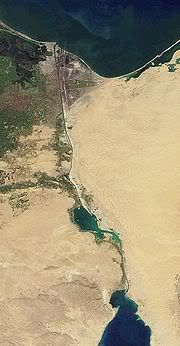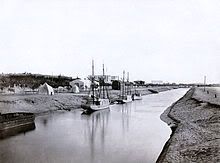the history of GCA has been hijacked by those wonderful Golden Age guys like Tom Simpson. In fact many of their comment relating to the original Golden Age (as I believe it to be) seems based upon untruth’s or lack of any sustainable evidence whatsoever.
Let’s start with our own GCA.com introduction to the subject of Golf Course Architecture and really what this site I believe is all about, yet it is given out the wrong message. The introduction on the First web page states the following
1. Pre-1899: The architectural skill employed in these courses is minimal and yet the lesson learned is invaluable: nature provides the most enduring challenge. The architects of this day spent only one or two days on site to stake out the tees and greens. They had few decisions to make: they didn’t have the ability to move much land. These courses have been largely modified over the past century to adjust to equipment changes.
2. 1900-1937: For the first time, architects started to move and shape land to create hazards and add strategic interest. Such work started with the heathland courses outside of London and men like Charles Blair Macdonald brought it to America, where he coined the term ‘golf architect’ around 1910. Tom Simpson called the Roaring Twenties the ‘Golden Age’ of course design, and he was right. 
Are we defining architectural skills as the same as golf course design? I am working on the presumption that we are, so let’s look to the very first sentence “
The architectural skill employed in these courses is minimal and yet the lesson learned is invaluable: nature provides the most enduring challenge”. Rather than this general statement let’s look at some of the facts, for this exercise I will use the most well known course not just of its day but still up there in the top listings today, yes it’s the Old Courses (TOC). The early maps of the 19th Century (attached below is a copy of A Martins Survey of 1821)

showing a basic design, but design nevertheless, however by the turn of the mid-century the course started a 30 year plus development that changes much of it character and nearly doubled its size helping to promoted it as the premier course in Scotland. The initial reason for this possibility was the reclaiming of land from the sea, mainly won by G Bruce with the usage of old four old barges

filled with stones. (See photo which shows the land to the left of the current British Golfing Museum Covering the Car Park area). We also have much movement in protecting the course from the sea, The Eden Estuary, not to mention the design modifications including the 1st and 18 Holes as well as the changes to many of the others pushing the course to exceed 1.5 times its original size in 1821 (the following is the 1879 survey of TOC).

TOC is certainly a course born out of Nature but engineered and designed by man to what we have today. In truth we can say that this course, while up to the turn of the 19th Century could be described as designed by a large extent Nature utilising the natural with a small degree of input by Man, yet thanks from the major subsequence work from the mid 19th Century on wards is pure design, a fully made course and certainly not by Nature although in a very natural location for the great game of Golf. TOC is still a striking and challenging course today loved by millions and is still at the heart of our Game, and not just in Scotland, proving, I believe that architectural skill was fully employed in the modernisation of the old course at St Andrews.
Now we come onto the next sentence “
The architects of this day spent only one or two days on site to stake out the tees and greens. They had few decisions to make: they didn’t have the ability to move much land.” which is a great inaccuracy and does not reflect on the real time it took to design and build a golf course. It may in part reflect the time the original designer spent at the site but not necessary the total design nor build time. My main concern is why did the these later architects who followed the 19th Designers not understand or acknowledge that the design to opening period did take on average 3 months through to 1 to 1.5 years. Why was the odd 1 -2 day scenario promoted as the norm when the records show so clearly that is not the case. I believe it’s down to pure ignorance of procedure which again I find surprising as surely you would have taken note of past designers and made an effort to understand them. Perhaps those who have studied Charles Blair MacDonald can advise if he used the one-two day design method that many believe was deployed in the mid 1870’s. To be honest the whole system has been corrupted much I believe in favour of the ability of those who described the 1920’s as the Golden Age to sprinkle more praise on their methods rather than address the truth that their work was just a follow on from the pre 1899 Great Designers who developed and lay down the fundamentals. Let’s just check if the later designer changed much – Standardising 9 & 18 Hole courses – no the records show that this standard well before1899, then what about hole size, hazards, again I believe the answer is no, but yes let’s give them credit for the work done, yes they lengthened the courses, moved and developed the Tees, but that was thanks to the Haskell ball forcing change. Perhaps inland course are to be credited to the new architects, no but many more where built through their period. Now what about movement of earth/soil, let’s just say that if money allowed that was not a major problem but due to the new clubs being formed money was tight and land leased in the early period until the clubs could afford purchase or had rich benefactors, so selection of land was important, seems more so back then than today as we feel we have the technology to do what we wish – who know the rights and wrongs of that apart from creating a golf course in regions that are not suitable for the game, and all the compromising that required from terraforming massive drainage systems and carts to protect the player s from the environment. While technology allows us to achieve all this, what have we and the game itself lost in playing the game with these massive implications. While on the subject let’s also kill this ridicules statement “
they didn’t have the ability to move much land “ by reminding all that the Suez Canal was built in 1859-69 in the middle of the period we are talking about, may put something in perspective, noting my point about new clubs being strapped for cash.


I have not posted any article proving the design to build period of many courses but it is well documented on many reports and club records the time taken from design to the Opening day of the course.
As for the staking out a course in the morning then playing it PM is a total misunderstand of the design procedure which will be a subject of another of my posts which I am in the process or writing utilising many articles & confirming my understand of how similar the design process is to that which we employed in the 20th Century.
I hope I have at least made you question the relevance of these statements that IMHO have no relevance and only seek to undermine the real hero’s and true Golden Age of Golf Design.
Melvyn